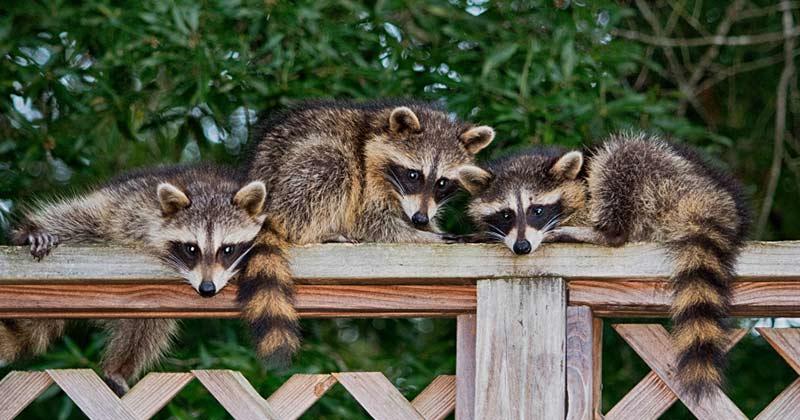Telling the sex of a raccoon is very difficult to accomplish without wrestling it to the ground. The reason for knowing if it’s a male or a female is important to know if the animal is wandering the property or looking for a place to live during the baby season but males and females will enter the attic and under decks. There is no visible difference in their activities or their appearance that we can tell so they all look the same except for their size. If you see a raccoon on its back you will see either a bump with a lip which is the vulva or a small protrusion which is a penis. This is still difficult because fur and fat can cover it up. If you see a very large raccoon it is likely a male, a small raccoon could be a female or a young male. This causes issues and makes any identification difficult without them spreading their legs.

If you want to know try taking a picture but be careful not to aggravate it. It’s best to not get too close so the picture may not reveal anything. If you think it’s a female on your property and you don’t see it with any babies you can try looking around your property for possible hiding places. If you fear it may have gotten into the attic you can buy an infrared camera and find them easily. In truth, gender is not so important as the time of year. Telling if a single raccoon is male or female is redundant outside of baby season and during it, you don’t have to, if it’s a female there will be babies in the nest. If you have a raccoon in your attic or under a structure it’s best to call a professional as the work to get them out is long and tedious. To get them out of a deck or shed you need to dig one foot by six-inch trench around the structure and bolt waterproof galvanized steel mesh to the bottom of the structure and bury it one foot down and six inches out. A one-way door must be attached which is usually a flat metal frame with a plexiglass spring holding the door. The raccoon can use it to vacate but when it closes it is locked into the frame and cannot be pushed back open the other way. This can be done on your own but make sure to wrap the structure well, any missing slivers can be widened by a raccoon.
